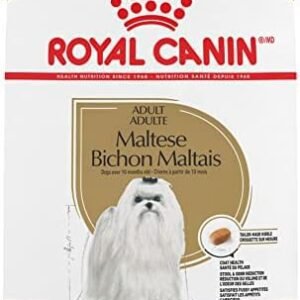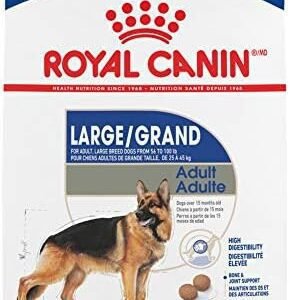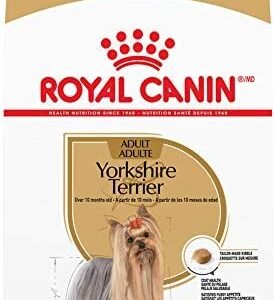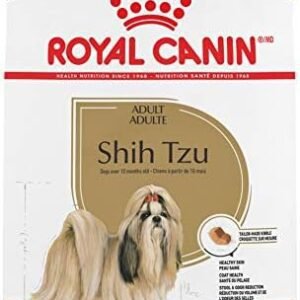Galliprant® is a prescription medication that falls under the category of non-steroidal anti-inflammatory drugs (NSAIDs). It is specially formulated for dogs and has gained recognition as an effective tool for managing pain and inflammation associated with osteoarthritis, a common condition that affects many aging dogs. The primary active ingredient in Galliprant® is grapiprant, which specifically targets the pain and inflammation associated with osteoarthritis without affecting other parts of the body.
Let’s start our journey of understanding Galliprant® by creating a table that summarizes essential drug information for veterinary use:
| Common Names | Galliprant® |
|---|---|
| Drug Type | Non-Steroidal Anti-Inflammatory |
| Used For | Pain and Inflammation in Dogs |
| Administered | Tablets |
| FDA Approved | Yes |
Galliprant® is administered in tablet form, making it convenient for dog owners to administer. The Food and Drug Administration (FDA) has approved this medication for use in dogs, indicating its safety and efficacy when used as prescribed by a veterinarian.
Table of Contents
II. Understanding Galliprant®
In this section, we will delve into a deeper understanding of Galliprant®. You will learn what Galliprant® is, how it works within the canine body, and the common conditions and ailments it is designed to treat or manage.
What is Galliprant®?
Galliprant® is a non-steroidal anti-inflammatory drug (NSAID) that is specifically formulated for dogs. This medication is a valuable tool in the management of pain and inflammation, primarily associated with osteoarthritis, a prevalent degenerative joint disease that affects many dogs, particularly as they age. It provides a targeted approach to alleviate discomfort and improve the quality of life for dogs suffering from this condition.
How Does Galliprant® Work in Dogs’ Bodies?
Galliprant® works by inhibiting the action of prostaglandins, which are substances in the body responsible for promoting pain and inflammation. Unlike some other NSAIDs, Galliprant® selectively targets prostaglandins that are involved in joint inflammation, leaving other prostaglandins unaffected. This selective action helps to minimize potential side effects and makes Galliprant® a safer choice for many dogs.
In dogs with osteoarthritis, joint tissues can become inflamed, leading to pain and reduced mobility. Galliprant® acts by reducing this inflammation, thus alleviating pain and allowing affected dogs to move more comfortably. It provides a new level of freedom and quality of life for dogs dealing with the challenges of osteoarthritis.
Common Conditions and Ailments in Dogs that Galliprant® Can Treat or Manage
Galliprant® is primarily used in dogs for the treatment and management of osteoarthritis. Osteoarthritis is a chronic condition characterized by the degeneration of joint cartilage and the underlying bone. It commonly affects older dogs, large breeds, and those with a history of joint injuries.
Signs of osteoarthritis in dogs may include:
- Lameness: Dogs may limp or appear stiff, particularly after resting.
- Decreased Activity: Affected dogs may be less willing to engage in physical activities.
- Pain: Dogs may exhibit signs of discomfort, such as whining or yelping when touched.
- Reduced Range of Motion: Dogs may have difficulty moving their joints through a full range of motion.
Galliprant® is not a cure for osteoarthritis, but it provides significant relief from the pain and inflammation associated with the condition. This enables affected dogs to lead more active and comfortable lives.
It’s crucial to recognize that Galliprant® should only be administered to dogs under the supervision and guidance of a veterinarian. Veterinarians will conduct a thorough assessment of a dog’s health and determine if Galliprant® is the appropriate treatment. They will also establish the correct dosage and monitor the dog’s response to the medication over time.
By understanding what Galliprant® is, how it operates within a dog’s body, and the specific conditions it can address, pet owners and veterinarians can make informed decisions regarding its use as part of a comprehensive approach to managing osteoarthritis and improving the well-being of affected dogs.
III. Benefits of Galliprant® for Dogs
In this section, we’ll explore the numerous benefits of Galliprant® for dogs. This medication has proven to be highly effective in addressing specific canine health issues and significantly enhancing the quality of life for our furry friends.
Effectiveness in Treating Specific Canine Health Issues
Galliprant® stands out as a potent and precise tool for managing a range of canine health issues, with its primary focus on osteoarthritis. Let’s delve into the specific benefits it offers:
1. Osteoarthritis Management
Osteoarthritis is a common and often debilitating condition in dogs, particularly in older or large breeds. Galliprant® effectively manages the inflammation and pain associated with this condition, allowing dogs to move more comfortably and actively. By targeting specific prostaglandins involved in joint inflammation, Galliprant® provides relief while minimizing side effects.
2. Improved Mobility
Dogs suffering from osteoarthritis often experience reduced mobility due to joint pain and stiffness. Galliprant® can help improve a dog’s range of motion, making it easier for them to walk, run, play, and engage in their favorite activities.
3. Enhanced Quality of Life
Pain and discomfort can significantly impact a dog’s quality of life. Galliprant® works to alleviate this pain, providing affected dogs with a better quality of life. It can enhance their overall well-being by allowing them to enjoy a more active and pain-free lifestyle.
How Galliprant® Can Improve Dogs’ Quality of Life
The benefits of Galliprant® extend beyond its effectiveness in treating specific health issues. This medication can make a meaningful difference in the daily lives of dogs and their owners.
1. Increased Comfort
Galliprant® reduces joint pain and inflammation, making dogs more comfortable in their daily activities. This increased comfort is evident in their ability to move without hesitation or pain.
2. Restored Activity
Dogs receiving Galliprant® treatment often regain their interest in physical activities. Whether it’s a game of fetch, a leisurely walk, or playful interactions, Galliprant® can help dogs rediscover their love for exercise and play.
3. Better Sleep
Pain from osteoarthritis can disrupt a dog’s sleep, leaving them restless and uncomfortable. Galliprant® helps improve their sleep quality by reducing discomfort, resulting in a well-rested and more alert canine companion.
4. Enhanced Emotional Well-Being
A dog’s emotional well-being is closely tied to their physical comfort. When pain is managed effectively, dogs tend to be happier, more engaged, and less irritable.
It’s important to highlight that while Galliprant® offers numerous benefits, it is not a one-size-fits-all solution. The decision to use Galliprant® should always be made in consultation with a veterinarian. They will assess a dog’s overall health, specific condition, and potential contraindications before prescribing Galliprant®.
The benefits of Galliprant® areevident in the improved health, comfort, and overall happiness it brings to dogs. For pet owners, witnessing their furry companions enjoying a higher quality of life is a reward in itself. By understanding these benefits, dog owners and veterinarians can make informed decisions about the use of Galliprant® as part of a comprehensive approach to canine healthcare.
IV. Administering Galliprant® to Dogs
In this section, we’ll explore the critical aspects of administering Galliprant® to dogs. From dosage guidelines to frequency of administration and essential tips for proper use, it’s crucial to ensure that this medication is given correctly to achieve the desired results while minimizing potential side effects.
Dosage Guidelines
Determining the right dosage of Galliprant® for your dog is essential for their well-being. The dosage is influenced by your dog’s size, condition, and the veterinarian’s recommendation. Here are some general guidelines to consider:
1. Weight-Based Dosage
Galliprant® is typically prescribed based on your dog’s weight. The standard dosage is 0.09 mg/lb (0.2 mg/kg) once daily. However, your veterinarian may adjust the dosage depending on your dog’s specific needs. Always follow your veterinarian’s instructions regarding the correct dosage for your dog.
2. Initial Loading Dose
In some cases, a veterinarian may recommend an initial loading dose, especially when your dog is starting Galliprant® treatment. This higher initial dose helps to establish the medication’s effectiveness and is often followed by the standard daily dose.
3. Regular Monitoring
Your veterinarian will monitor your dog’s progress while on Galliprant® and may adjust the dosage if necessary. It’s crucial to attend follow-up appointments to ensure that the medication continues to be effective and that your dog’s health is stable.
Frequency of Administration
Galliprant® is typically administered once daily. This daily dosing schedule ensures a consistent level of the medication in your dog’s system, which is essential for managing conditions like osteoarthritis. Administering Galliprant® at the same time each day can help maintain its effectiveness.
Directions for Use
Administering medication to dogs can sometimes be challenging, especially if your dog is fussy about taking pills. Here are some tips for effectively giving Galliprant® to your furry friend:
1. Hide in Treats
Many dogs can be tricked into taking medication when it’s concealed in a tasty treat. Ask your veterinarian if it’s acceptable to hide Galliprant® in a soft treat or pill pocket.
2. Mix with Food
Some dogs may accept Galliprant® when it’s mixed with their regular food. Ensure that your dog consumes the entire meal to guarantee they receive the full dose.
3. Crush and Mix
In cases where your dog refuses to take pills, ask your veterinarian if it’s acceptable to crush Galliprant® and mix it with a small amount of wet food. Ensure your dog eats the entire mixture to receive the complete dose.
Importance of Adhering to Prescribed Dosages
Consistency in administering Galliprant® is critical for its effectiveness. Skipping doses or adjusting the dosage without veterinary guidance can hinder your dog’s progress. It’s essential to adhere to the prescribed dosages to ensure that your dog receives the appropriate amount of medication to manage their condition.
Missed Dose Guideline
If you accidentally miss a dose, here’s what to do:
- Give the missed dose as soon as you remember, unless it’s close to the time for the next scheduled dose.
- If it’s near the time for the next dose, skip the missed dose and continue with the regular dosing schedule.
- Never double the dose to make up for the missed one.
It’s crucial not to administer more than the prescribed amount in a single day. If you’re unsure about what to do when you miss a dose, consult your veterinarian for guidance.
Proper administration of Galliprant® is vital to ensuring that your dog receives the full benefit of this medication while minimizing the risk of side effects or complications. Always follow your veterinarian’s recommendations and seek their guidance if you have any questions or concerns about administering Galliprant® to your beloved canine companion.
V. Potential Side Effects and Precautions
As with any medication, it’s essential to be aware of the potential side effects and take necessary precautions when administering Galliprant® to dogs. This section provides valuable insights into common side effects, severe or adverse reactions, precautions for pregnant or lactating dogs, and interactions with other medications or supplements.
Common Side Effects of Galliprant® in Dogs
Galliprant® is generally well-tolerated by most dogs, but, like any medication, it can cause side effects. It’s crucial to be aware of these common side effects and monitor your dog’s response to the medication:
1. Vomiting
Some dogs may experience mild digestive upset, leading to occasional vomiting. If vomiting occurs frequently or is severe, consult your veterinarian.
2. Diarrhea
Diarrhea is another common side effect of Galliprant®. It’s usually mild, but if it persists or becomes severe, inform your veterinarian.
3. Decreased Appetite
Galliprant® may temporarily reduce your dog’s appetite. If this persists and leads to significant weight loss, consult your veterinarian for guidance.
4. Lethargy
In some cases, dogs may exhibit lethargy or reduced energy levels when taking Galliprant®. This is typically a temporary side effect, but if it continues for an extended period, consult your veterinarian.
Identifying Severe or Adverse Reactions
While severe adverse reactions to Galliprant® are rare, it’s essential to recognize the signs of a more serious issue and act promptly if they occur. Symptoms of severe reactions may include:
- Difficulty Breathing: If your dog experiences difficulty breathing, wheezing, or other respiratory distress, seek immediate veterinary care.
- Allergic Reactions: Look for signs of an allergic reaction, such as swelling of the face, lips, tongue, or throat, hives, or intense itching. Allergic reactions can be life-threatening, so prompt veterinary attention is crucial.
- Jaundice: Yellowing of the skin, gums, or eyes can indicate liver problems. This is a severe adverse reaction that requires immediate medical intervention.
- Black, Tarry Stools: Dark, tarry stools can be a sign of gastrointestinal bleeding, a serious issue that needs immediate veterinary care.
- Collapse: If your dog collapses or loses consciousness, it’s an emergency, and you should seek urgent medical attention.
Precautions for Pregnant or Lactating Dogs
If your dog is pregnant, lactating, or you suspect pregnancy, consult your veterinarian before administering Galliprant®. While this medication is generally considered safe, its use during pregnancy and lactation should be approached with caution and under professional guidance.
Interactions with Other Medications or Supplements
Galliprant® may interact with other medications or supplements your dog is taking. It’s crucial to inform your veterinarian of all medications and supplements your dog is using to avoid potential interactions. Some medications and substances that may interact with Galliprant® include:
- NSAIDs (Non-Steroidal Anti-Inflammatory Drugs): Using Galliprant® with other NSAIDs can increase the risk of gastrointestinal issues. Combining multiple NSAIDs is typically not recommended.
- Corticosteroids: Concomitant use of corticosteroids and Galliprant® should be closely monitored, as it can increase the risk of side effects.
- Other Medications: Inform your veterinarian of any other medications your dog is taking, including over-the-counter drugs, as they may interact with Galliprant®.
- Herbal Supplements: Certain herbal supplements can interact with Galliprant®, potentially affecting its efficacy or safety. Discuss herbal supplements with your veterinarian.
It’s essential to maintain open communication with your veterinarian throughout your dog’s treatment with Galliprant®. They can provide guidance on potential interactions and adjust the treatment plan as needed to ensure your dog’s health and safety.
In the event of any adverse reactions or concerning symptoms, contact your veterinarian immediately. Early intervention can be crucial in addressing any issues and ensuring your dog’s well-being while on Galliprant®.
VI. Consultation with a Veterinarian
When it comes to the well-being of your furry friend, professional guidance is invaluable. This section underscores the importance of consulting a veterinarian when considering or administering Galliprant® to your dog. It also provides insights into overdose information, recognizing potential toxicity and adverse effects, when to call the vet, and how to discuss Galliprant® with your veterinarian, including seeking a second opinion if needed.
Emphasizing the Importance of Professional Guidance
Galliprant® is a prescription medication, and its administration should always be guided by a licensed veterinarian. The decision to use Galliprant® and its proper dosage should be made in consultation with a veterinary professional. Here’s why professional guidance is crucial:
- Accurate Diagnosis: Veterinarians are trained to diagnose your dog’s condition accurately. They can determine whether Galliprant® is the right choice for your dog’s specific health issue.
- Proper Dosage: Veterinarians will calculate the correct dosage of Galliprant® based on your dog’s size, condition, and other relevant factors. This ensures safety and effectiveness.
- Monitoring and Adjustments: Your vet can monitor your dog’s response to Galliprant® and make necessary adjustments to the treatment plan if needed.
- Preventing Interactions: Veterinarians can assess your dog’s overall medication and supplement regimen to avoid potential interactions or adverse effects.
Overdose Information and Possible Toxicity/Effect
While it’s essential to follow your veterinarian’s dosing instructions carefully, accidental overdose can occur. If you suspect that your dog has ingested more Galliprant® than prescribed, it’s essential to act promptly. Contact your veterinarian or an emergency veterinary clinic immediately. In cases of overdose, your veterinarian may induce vomiting or administer activated charcoal to reduce absorption.
Overdose can lead to potential toxicity and severe adverse effects, which may include:
- Gastrointestinal Issues: Excessive Galliprant® can cause severe gastrointestinal problems, including vomiting, diarrhea, and gastrointestinal bleeding.
- Liver and Kidney Damage: Overdose may impact liver and kidney function, leading to organ damage.
- Neurological Symptoms: Seizures, lethargy, and other neurological symptoms can occur in severe cases of overdose.
Signs or Symptoms: When to Call the Vet
During the course of Galliprant® treatment, it’s important to be vigilant about your dog’s well-being. If you notice any of the following signs or symptoms, contact your veterinarian:
- Allergic Reactions: Symptoms of an allergic reaction include swelling of the face, lips, tongue, or throat, hives, and intense itching.
- Difficulty Breathing: Wheezing, rapid breathing, or other signs of respiratory distress should be addressed immediately.
- Jaundice: Yellowing of the skin, gums, or eyes can indicate liver problems, and your vet should be notified.
- Gastrointestinal Issues: Severe or persistent vomiting, diarrhea, dark or tarry stools, and gastrointestinal bleeding should prompt a call to your veterinarian.
- Lethargy: If your dog becomes unusually lethargic or lacks energy for an extended period, it’s essential to seek professional advice.
- Seizures: Seizures or convulsions require immediate attention from a veterinarian.
How to Discuss Galliprant® with Your Veterinarian
Effective communication with your veterinarian is crucial in ensuring your dog’s health and well-being while on Galliprant®. Here are some key points to discuss with your vet:
- Reason for Medication: Explain the specific reason for considering Galliprant® for your dog. Share your dog’s symptoms and any diagnostic tests or evaluations conducted.
- Current Medications: Provide a comprehensive list of all medications, supplements, and treatments your dog is currently receiving, as this can affect the decision to use Galliprant®.
- Any Allergies: If your dog has known allergies or sensitivities, make sure your vet is aware of them. Allergic reactions to medications can be severe.
- Previous Reactions: If your dog has previously had adverse reactions to medications, share this information with your veterinarian. It may influence the choice of treatment.
- Follow-Up Appointments: Discuss the need for follow-up appointments and monitoring to assess the medication’s effectiveness and any side effects.
- Alternative Options: Inquire about alternative treatments or medications, if available, and their potential benefits and drawbacks.
Seeking a Second Opinion
Sometimes, it may be prudent to seek a second opinion from another veterinarian, especially if you have concerns about the diagnosis or treatment plan. A second opinion can provide additional insights and help you make the most informed decisions about your dog’s health.
If you choose to seek a second opinion, it’s essential to provide the new veterinarian with all relevant medical records, including your dog’s diagnostic history and previous treatment plans. This ensures they have a comprehensive understanding of your dog’s health status.
In summary, when considering or administering Galliprant® to your dog, remember that professional guidance is key. Consult with your veterinarian, follow their recommendations diligently, and stay vigilant for any signs of adverse reactions. Open and clear communication with your vet will help ensure the best possible care for your beloved canine companion.
VII. Comparison with Similar Drugs in this Category
When it comes to managing pain and inflammation in dogs, there are various medications available in the same category as Galliprant®. This section provides a comparative analysis of Galliprant® with other drugs commonly used to treat similar conditions in dogs. We’ll explore the efficacy of these drugs, the circumstances in which one alternative may be chosen over another, and the cost considerations associated with each.
Comparing the Efficacy of Drugs
- Galliprant® (Grapiprant): Galliprant® is a relatively new medication designed to target pain and inflammation. It works by specifically blocking the prostaglandin E2 (PGE2) receptors, which are responsible for causing pain and inflammation. This specificity may result in fewer side effects compared to some other non-steroidal anti-inflammatory drugs (NSAIDs).
- Carprofen (Rimadyl): Carprofen is another NSAID commonly used in veterinary medicine. It helps reduce pain and inflammation by inhibiting enzymes that produce prostaglandins. It’s effective but can have side effects, especially with long-term use.
- Meloxicam (Metacam): Meloxicam is another NSAID used for pain management. It’s known for its efficacy but, like other NSAIDs, can have gastrointestinal and kidney-related side effects.
- Prednisone: Prednisone is a corticosteroid often used to manage inflammation and pain. It’s generally effective but may cause more side effects than some other medications.
- Adequan Canine: Adequan Canine is an injectable medication that contains polysulfated glycosaminoglycan (PSGAG). It’s primarily used to treat osteoarthritis and joint problems. While it’s not an NSAID, it can be effective for pain relief.
The efficacy of these medications may vary depending on the specific condition, the dog’s health, and individual response. Your veterinarian will consider your dog’s unique situation when recommending a particular medication.
Choosing the Right Alternative
The choice between Galliprant® and other medications often depends on several factors:
- Diagnosis: The primary factor is the specific diagnosis. For some conditions, certain drugs may be more suitable. For example, Galliprant® is primarily used for osteoarthritis, whereas other NSAIDs may be preferred for different types of inflammation.
- Pre-existing Conditions: Dogs with pre-existing health issues may have different medication requirements. Your veterinarian will consider your dog’s overall health when making recommendations.
- Response to Treatment: Sometimes, a particular medication may be chosen based on how well the dog responds to it. If one medication is more effective or causes fewer side effects, it may be the preferred choice.
- Age and Size: The age and size of your dog can influence the medication choice. Smaller or older dogs may be more sensitive to certain drugs.
- Owner Compliance: The ease of administration can be a significant factor. Some owners may find it more convenient to administer a tablet (like Galliprant®) rather than an injection or a liquid medication.
Comparing the Cost of the Drug
The cost of medication is another aspect that dog owners often consider when choosing between alternatives:
- Galliprant®: Galliprant® can be relatively more expensive than some other options. However, its specificity and potentially lower risk of side effects may justify the cost for many dog owners.
- Carprofen (Rimadyl): Carprofen is often considered more cost-effective, making it a popular choice. However, it may have more side effects, especially in long-term use.
- Meloxicam (Metacam): The cost of Meloxicam may vary depending on whether it’s prescribed as a generic or brand-name medication. In either case, it’s often more affordable than Galliprant®.
- Prednisone: Prednisone is generally quite affordable. However, it may have more side effects, particularly with long-term use.
- Adequan Canine: Adequan Canine, as an injectable medication, may have a different pricing structure. Some dog owners find it cost-effective for long-term management of joint issues.
Ultimately, the cost consideration should be balanced with the effectiveness and safety of the medication. Your veterinarian can help you make an informed decision that aligns with your budget and your dog’s health needs.
In conclusion, the choice of medication for your dog’s pain and inflammation management is a decision best made in consultation with your veterinarian. Each drug has its unique benefits and considerations, and the most suitable option for your dog will depend on various factors, including the specific condition, overall health, response to treatment, and budgetary considerations. Your veterinarian is your best resource for determining the most effective and safe treatment plan for your furry companion.
FAQs
Q1: What is Galliprant® used for in dogs?
Galliprant® is primarily used for the management of pain and inflammation associated with osteoarthritis in dogs. It can help improve mobility and overall comfort in dogs suffering from this degenerative joint disease.
Q2: How does Galliprant® work in dogs’ bodies?
Galliprant® works by targeting specific receptors called prostaglandin E2 (PGE2) receptors. These receptors are responsible for causing pain and inflammation. By blocking these receptors, Galliprant® reduces the effects of PGE2, leading to decreased pain and inflammation in the affected joints.
Q3: Is Galliprant® safe for long-term use in dogs?
Galliprant® is generally considered safe for long-term use in dogs, especially when compared to some other non-steroidal anti-inflammatory drugs (NSAIDs). However, as with any medication, long-term use should be monitored by a veterinarian, who will assess your dog’s health and adjust the treatment plan as needed.
Q4: Are there any side effects associated with Galliprant®?
While Galliprant® is considered to have fewer side effects compared to traditional NSAIDs, it may still cause some adverse reactions in dogs. Common side effects include vomiting, diarrhea, decreased appetite, and lethargy. If you notice any unusual symptoms in your dog while they are on Galliprant®, it’s essential to contact your veterinarian.
Q5: Can Galliprant® be used in all dog breeds?
Yes, Galliprant® is approved for use in all dog breeds. It’s important to follow the dosing instructions provided by your veterinarian, which are typically based on your dog’s size and weight.
Q6: Is Galliprant® suitable for senior dogs?
Galliprant® can be used in senior dogs as part of a pain management plan for conditions like osteoarthritis. Your veterinarian will determine the appropriate dosage and treatment duration for your senior dog.
Q7: Can Galliprant® be administered to pregnant or lactating dogs?
The safety of Galliprant® in pregnant or lactating dogs has not been extensively studied. Therefore, it’s essential to consult with your veterinarian if your dog is pregnant, nursing, or intended for breeding before starting Galliprant®.
Q8: Can I administer Galliprant® to my dog without a prescription?
No, Galliprant® is a prescription medication. It is essential to consult with a veterinarian before giving Galliprant® to your dog. Your vet will diagnose the condition and provide a prescription based on your dog’s specific needs.
Q9: What do I do if my dog misses a dose of Galliprant®?
If your dog misses a dose of Galliprant®, administer it as soon as you remember. However, if it’s close to the time for the next scheduled dose, skip the missed one and return to the regular dosing schedule. Never double up on doses to make up for the missed one.
Q10: How should I store Galliprant®?
Galliprant® should be stored at room temperature (between 68°F to 77°F or 20°C to 25°C) and protected from excessive heat. Keep it in its original packaging and out of reach of children and pets.
Q11: Can I combine Galliprant® with other medications or supplements?
Combining medications and supplements can sometimes lead to adverse interactions. It’s crucial to inform your veterinarian about any other medications or supplements your dog is taking so that they can make informed recommendations and monitor for potential interactions.
Q12: Can I purchase Galliprant® from online pharmacies?
While it is possible to purchase Galliprant® from online pharmacies, it is highly recommended to do so only under the guidance of your veterinarian. Your vet can ensure that you are sourcing the medication from a reputable and safe source.
























